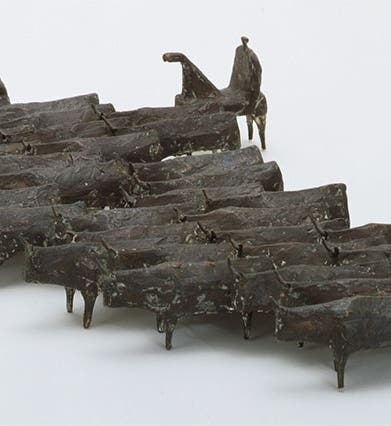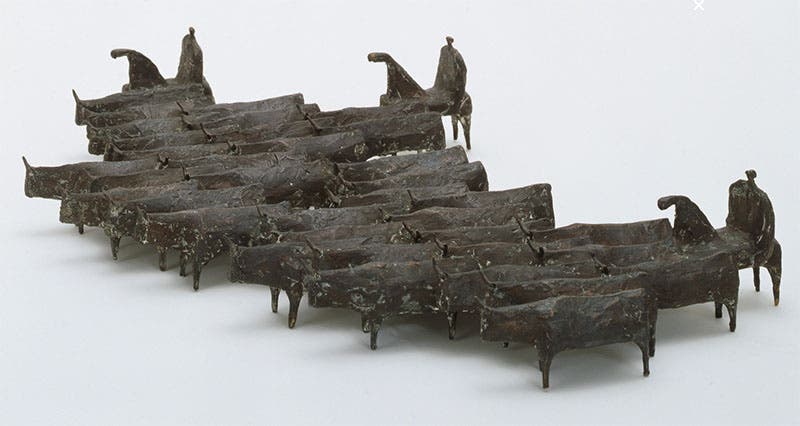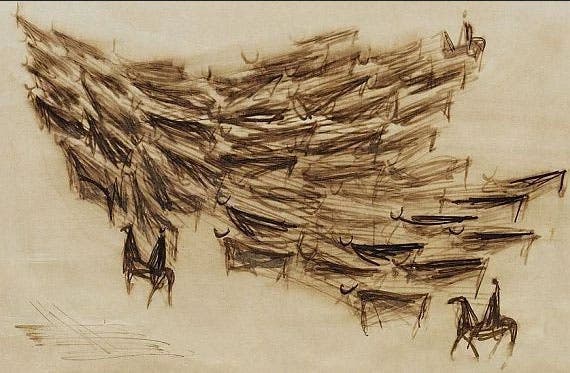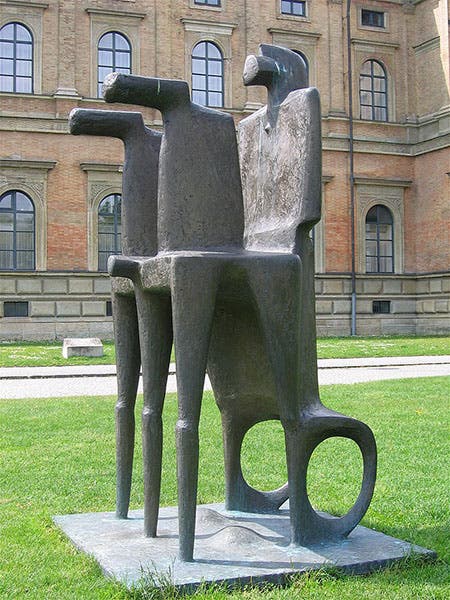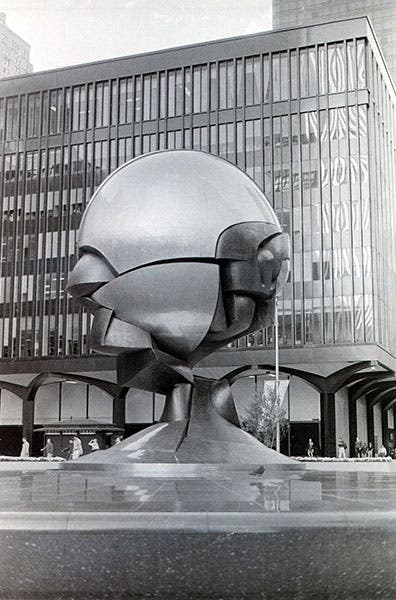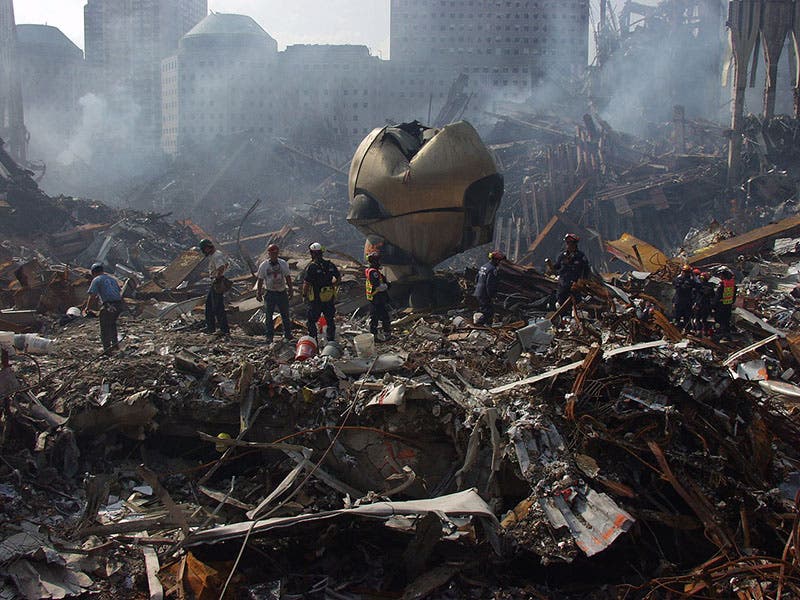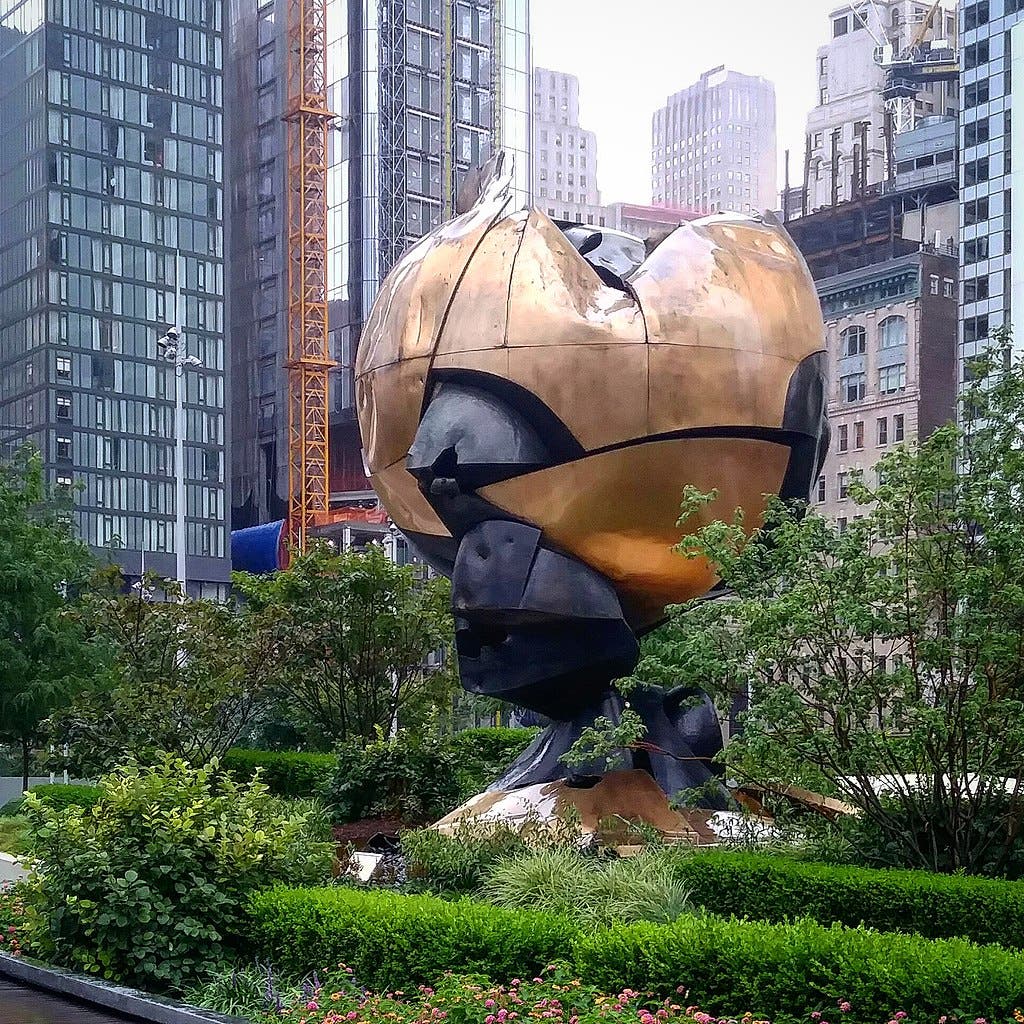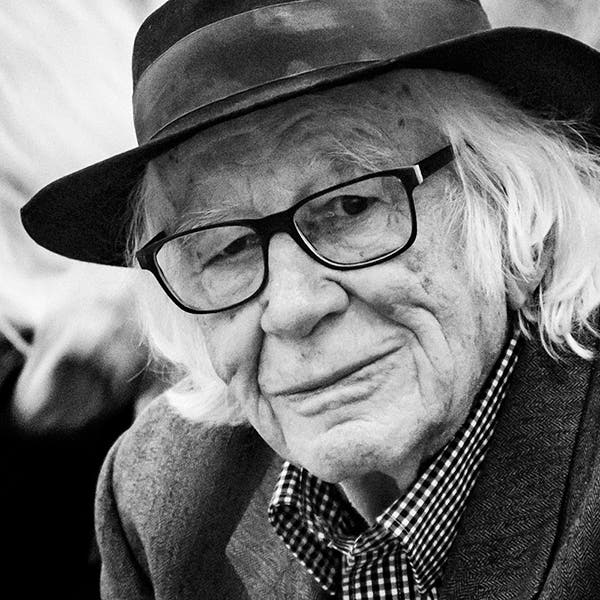Scientist of the Day - Fritz Koenig
Fritz Koenig, a German sculptor, was born June 20, 1924, in Würzburg, Bavaria. He trained in Germany and Italy, and spent most of his working life either in Landshut, Bavaria, or in nearby Ganslberg, where he bought land and built a studio and a stable for the horses he loved to raise and ride.
We occasionally include sculptors in this series, if they were animaliers, or if they did sculptures of scientists, or if they were heroic sculptors who worked on a large scale, since in my opinion, anyone who manhandles 25,000 pounds of bronze into an aesthetic entity is as much an engineer as any bridge builder or locomotive designer. Koenig did not do portraits of any kind, and only a few animals, although the ones he did are quite remarkable. One of his early works, a sculptural collage of sorts, is called Camargue, and it exists in at least 15 versions. We show you Camargue X, in the Museum of Modern Art in New York (first image). Camargue is a region in southern France, on the Rhone delta, where they raise the bulls used for bullfighting in Spain. Camargue X shows several vaqueros (the French term, cow-boy, just doesn’t seem right), herding bulls. One of Koenig’s drawings for Camargue survives, and demonstrates that he was as fine a draughtsman as he was a sculptor (second image).
Another animal sculpture reflects Koenig’s move toward abstraction, as hard edges and boundaries disappear. A biga was an ancient Mediterranean chariot, pulled by two horses, side by side. Koenig’s Grosse Biga is a marvelous rendition of the essence of horse and charioteer. Many of Koenig’s bronzes exist in two versions: one or more of table-top size, for museums, and another on a large scale, intended for outdoor placement, and so there is both a Kleine Biga and a Grosse Biga. The one we show, the Grosse Biga, is in the gardens of the Alten Pinakothek in Munich (third image).
Many of Koenig's bronze figures are even more abstract than the Grosse Biga, little more than spheres welded to rods and cylinders, and I leave you to find those on your own, but I do want to show his Pieta, which I think is just wonderful. This example, a small version, was cast in 1962 and sold at auction in 2010 to the museum in Koenig’s hometown of Landshut (fourth image). And since we have now showed a work of art that has nothing to do with science, we can show you another – a set of doors Koenig designed for the Dom St. Kilian, a Romanesque church in Würzburg (fifth image). It is hard to make out the detail in the photo, but it depicts the creation story from Genesis, starting with the dividing of the waters at the top and moving down.
All these are fine sculptures, but if you google "Fritz Koenig", 99% of the links will take you to a discussion of The Sphere. This is a monumental bronze sculpture by Koenig that was commissioned for the plaza in front of the World Trade Center in New York City. Twenty-five feet across, it was fitted together from over 50 segments, and on its installation in 1971, Koenig said that it represented “world peace through world trade.” Our sixth image shows The Sphere in place on the plaza between the two towers.
When, after 9/11, the dust had settled on the mountain of debris covering the former location of the towers, Koenig’s Sphere was still standing, dented but unbowed, the only work of art in the entire complex that survived the terrorist attack (seventh image).
After the square was finally cleared of debris, the damaged Sphere was moved out, and after some discussion, it was decided to reposition it, unrestored, in Battery Park, not too far from Ground Zero (this was in 2002). Over the years, Koenig’s battered Sphere came to be viewed as an appropriate 9/11 memorial, representing the spirit of America that will not bow to terrorism. In 2016, the sculpture had to be moved, and it was relocated to Liberty Park, still close to its original location (eighth image). It seems as if this will be its permanent home.
The Sphere is a telling example of a work of art that has been transformed by circumstance into something quite different from the artist’s original intent. Koenig recognized this and embraced it. As he said when interviewed, not long after the attacks: “Now she has a different beauty, one that I could never imagine. She now has her own life - different from the one I gave her.”
This photo of the 91-year-old Koenig, taken just two years before his death, shows him as indomitable and unbowed as his Sphere.
William B. Ashworth, Jr., Consultant for the History of Science, Linda Hall Library and Associate Professor emeritus, Department of History, University of Missouri-Kansas City. Comments or corrections are welcome; please direct to ashworthw@umkc.edu.

